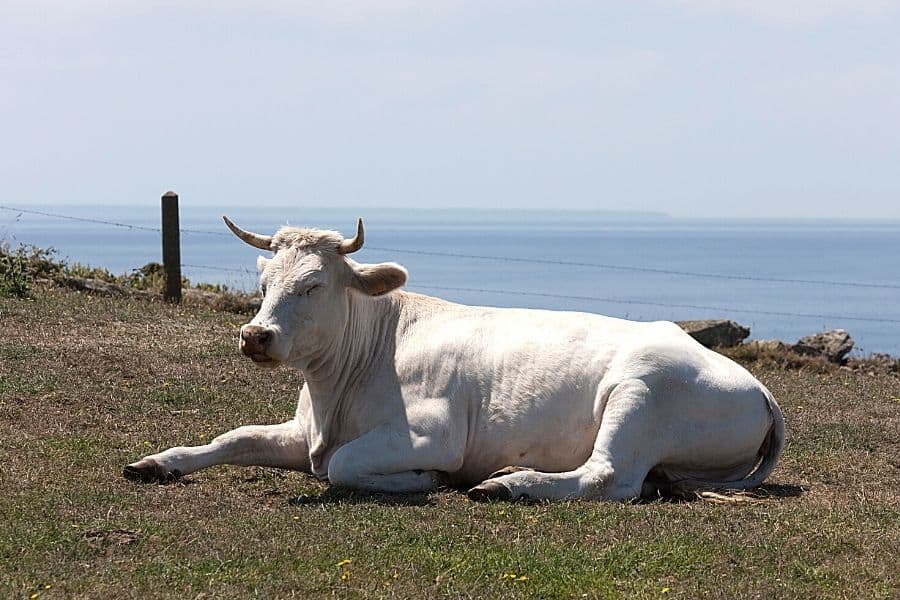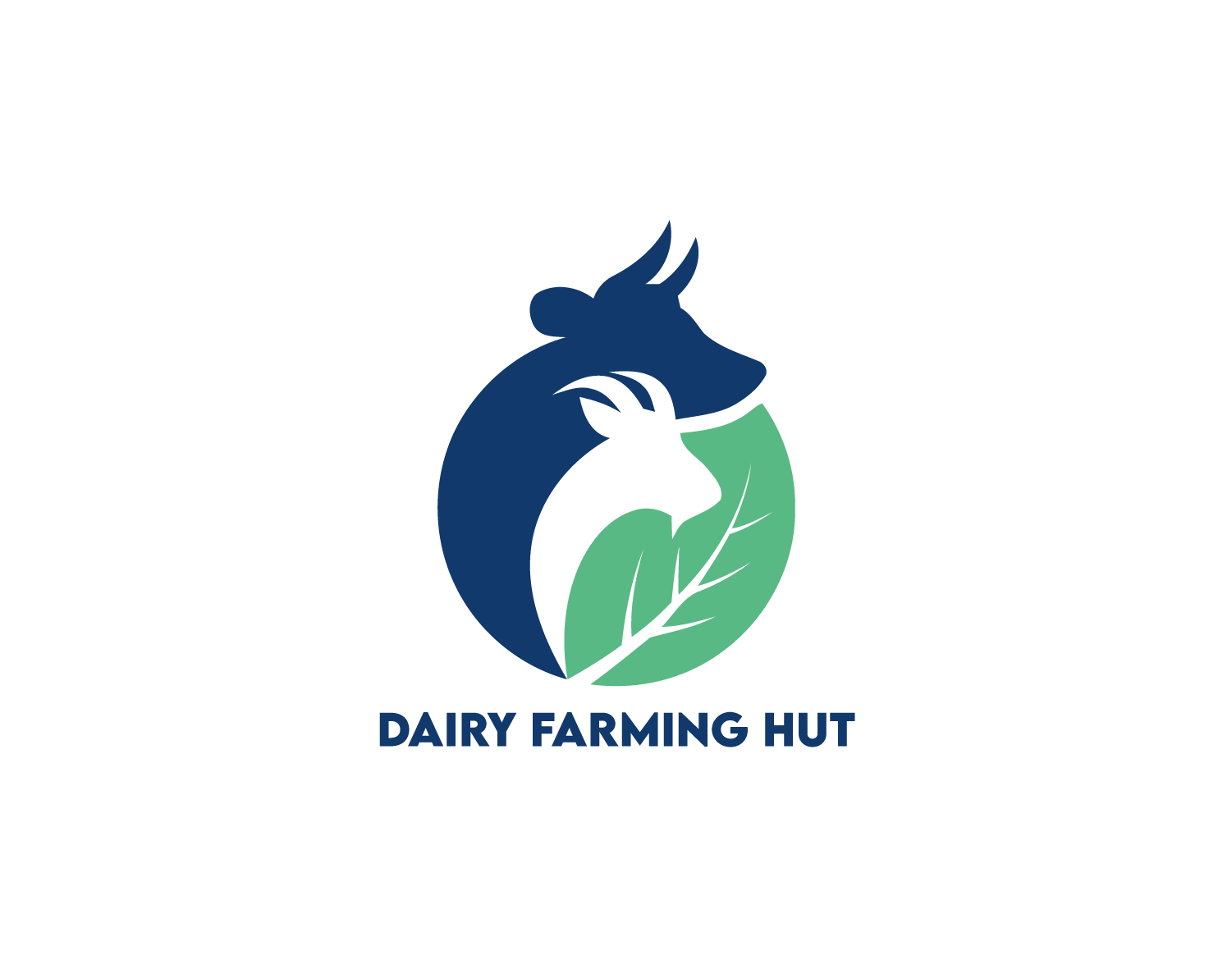Oftentimes, all cattle with horns are considered bulls – aka, males. As for female cows, most people have an idea of what they look like in their heads, and the image probably does not include horns. Do female dairy cows have horns, though?
Horns in cattle are genetic, not gender-specific. Both male and female cattle can have horns, particularly dairy breeds. Most are dehorned at birth to avoid injury to other cattle. There have been methods developed through genetic engineering that allow the birth of Holstein cattle without horns.
It is interesting that, for the most part, only bulls are considered to have horns. However, that is not the case. There are measures farmers take, including dehorning, to make sure the farm runs smoothly, and that is what you will learn about if you continue reading on.
Which Cows Have Horns?

Cows are defined as female cattle that have produced at least one calf. There are a few different breeds of cows that naturally have horns. These include female dairy cows, Texas Longhorns, Danish Red, and White Park.
The horns on cows tend to be smaller than those found on bulls.
A common reason that fewer female cattle have horns than males is the use of a method of genetic engineering resulting in the birth of naturally “polled” cattle. Polled cattle do not have horns.
Other methods allowing for the birth of cattle without horns are also being developed. In the meantime, dehorning and disbudding are different and involve the removal of horns or the prevention of horns from growing.
Why Do Dairy Cows Get Dehorned?
Dehorning calves is not a popular subject, and you will not find many farmers that take it lightly. In fact, it is considered vital for a dairy farm or ranch to run smoothly and without incident.
Furthermore, avoiding damage to equipment and other objects can be a benefit to dehorning. Similarly, it makes working with dairy cows easier.
The reasons for dehorning and disbudding cattle include the following things like safety and practicality.
Safety
In dairy cow herds, especially Holstein, if ranchers do not dehorn the calves, all the grown dairy cows would have horns. They would be able to wreak havoc on each other and the farmers, endangering everyone involved. Think about it. You would not want to work on something with your back turned in an enclosure of 15 bulls, right?
Some of the safety concerns to consider are:
Horns can be dangerous, and safety is a number one priority, so dehorning is necessary. When allowed to grow, these horns can become very large, and they are permanent. You want to dehorn when they are calves versus when they are adults to avoid complications and unnecessary pain to the cow in the future.
Practicality and Damage Reduction
For dairy cow ranchers, the dairy cow is part of the investment in the business. To make money from these cows, the ranchers must be getting high production from the cows when milking them, and stress does not help.
Similarly when considering the damage reduction, consider the expensive and large equipment used to milk and feed these cattle. If those large 1000 lb+ animals had horns that they could swing around, there would be many more repairs to deal with and maybe a few more dairy farms are out of business.
What Is the Process of Dehorning Calves?
The process of dehorning calves is relatively simple, though it is most safely and effectively done early in a calf's life. There are two methods for removing the horns from calves: dehorning and disbudding.
While both methods are effective, disbudding is considered a far easier and more humane method.
Dehorning
Dehorning involves removing the horns of calves after they have formed from the horn bud, preventing the horns from growing and posing safety and damage risks as the calf gets older.
Dehorning is done by using a tool to scoop out the horn and surrounding tissue and is sometimes considered a crueler method of removing the horns of cattle. Not to mention the physical trauma involved can drastically increase a cow's stress levels.
Disbudding
Disbudding is more commonly used than dehorning because it puts less stress on the calf by stopping the process of a horn growing from ever starting. Some facts about the process are:
Disbudding is a simpler and less painful way to dehorn dairy cows. For either technique, painkillers are given to the cattle to numb the area, as doing it without would cause a tremendous amount of pain and distress.
What About Dehorning Adult Cows?
Adult cows cannot be disbudded, but they can be dehorned. However, it is important to keep in mind that the less invasive procedure of disbudding is already painful to a calf. Having to dehorn an adult can be a traumatic, messy, and potentially cruel thing to do.
The only times you should ever consider dehorning an adult cow is if:
Is Dehorning Bad for Calves?
If done properly, dehorning calves will most likely not seriously affect their future health or development. The process involves some pain, but it is manageable and usually minor. Ranchers should always use the correct pain management solutions for their calf. However, there are health risks involved with dehorning, including:
The best, least painful methods of dehorning are performed early in the life of a calf. If dehorning is performed within days of birth, a caustic paste can be used, which has shown to be less painful than other methods of horn removal.
Make sure to follow the proper techniques and strategies recommended by the American Veterinary Medical Association for dehorning to avoid harmful side effects. The process is meant to be humane, and if the calf experiences large amounts of pain and is clearly showing signs of stress, stop and consult a vet.
What Are the Alternatives to Dehorning?
Ranchers do not enjoy dehorning their dairy cows. No one likes burning the top of a calf's head and scaring them. After all, stress leads to less production, so happy and healthy cows are more desirable. Being able to skip the dehorning process is huge for ranchers and their calves.
For a while, ranchers have been able to breed polled cattle. Polled cattle refers to the dominant gene being singled out, and in this case, it is used to eliminate the horns when the calves are born. This process is slow, as it takes time to breed a whole polled herd, but many farmers have achieved it.
A Future without Horns
Recent science and advances in technology have allowed the implementation of genetic editing where calves will begin to be born without horns. This process is similar to the one done in polled breeding.
However, this alternative method is not necessarily available and affordable to all dairy cow farmers. Still, with it being a recent breakthrough, the hope is that it will become more available as time goes on. Having the ability to insert cows into herds with no horns and start that far down the line will already speed up the process.
Conclusion
Contrary to popular belief, cows can indeed have horns. Holstein cows are the most common dairy cow, and their females are all born with horns. With horns being a safety hazard for the ranchers, the cows, and their surroundings, dehorning is the way to go.
The techniques used for dehorning calves are humanitarian, especially when done at a young age, and pain killers are appropriately utilized. The calf might not have the best experience but will come out on the other side okay. Alternative methods and polled breeding has helped with more humane and less stressful ways of getting rid of horns.
